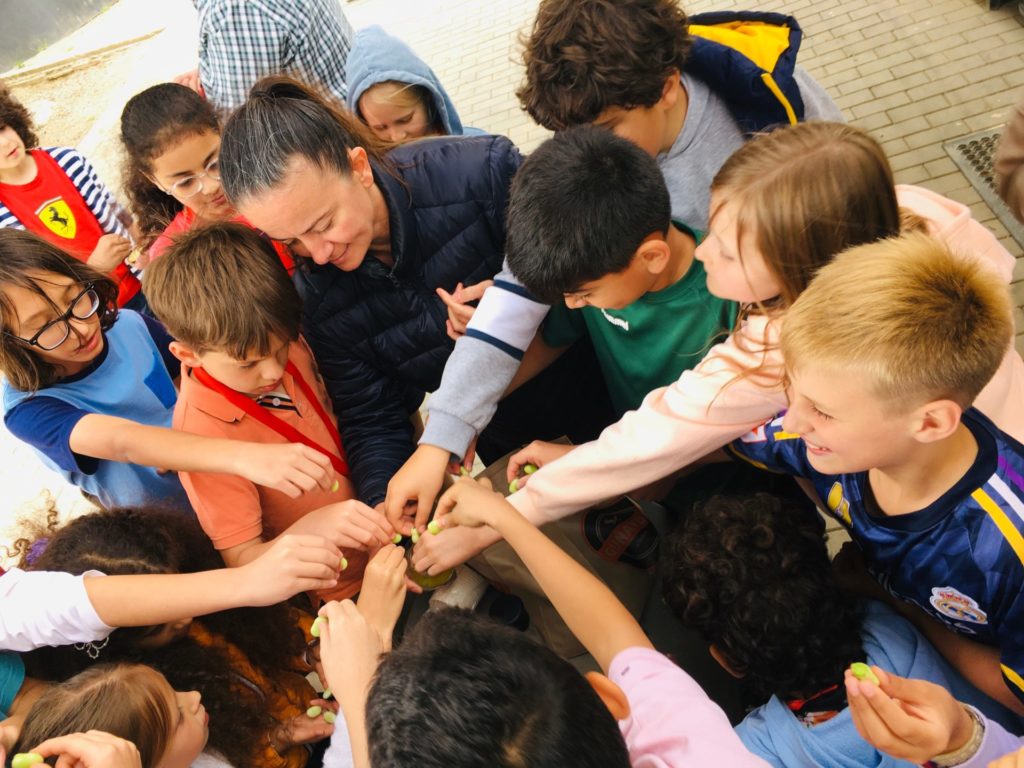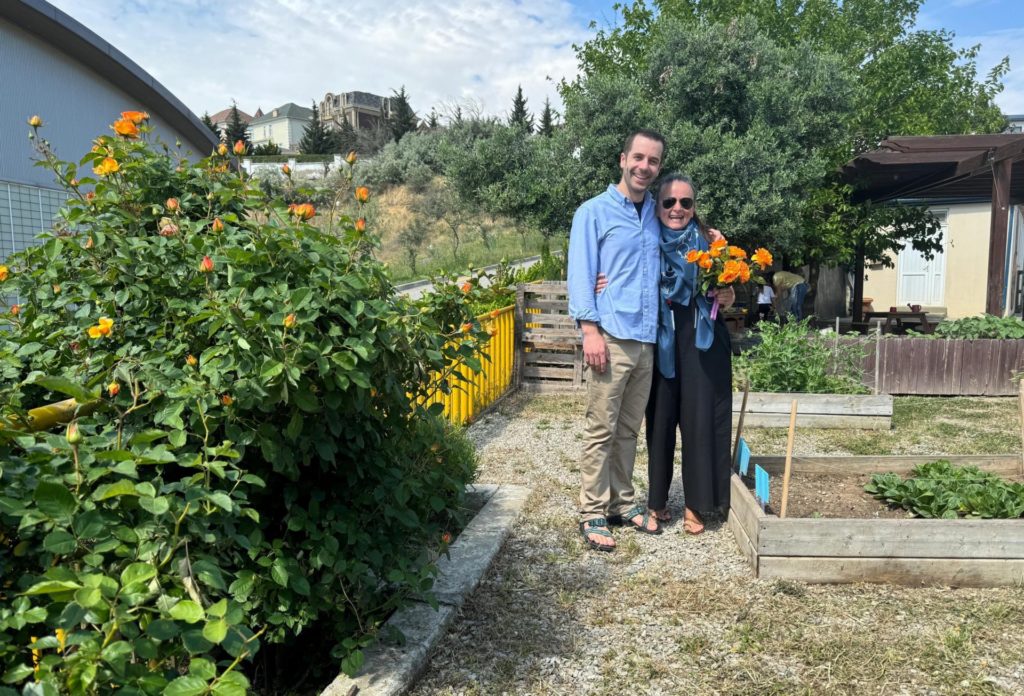Magical Produce
How a parent volunteer helped bring our school garden to life

Alex Johnson
Head of Mathematics and teacher Leader of the TISA
Published:
Whenever I welcome a new group of students to our school garden I always ask them, “What does a plant need to grow?” It works for kindergarteners, because we can talk about sunlight and water. And it works for high schoolers, because we can talk about carbon dioxide and nitrogen fixation. Regardless of their age, our subject is synergy: the magical result of the right components, in the right quantities, at the right time. Synergy can be more than just molecules and photons. Sometimes it’s about people. I’d found some success growing vegetables in the dry, windy environs of Baku. But with a full teaching load, I struggled to involve students in the best part of growing vegetables: eating them.
Then I met Zeynap.
The garden was in bloom, with red and orange nasturtium, spicy yellow kale flowers, and sweet-smelling lavender. Rebecca Greenall, our action coordinator,1 introduced me to Zeynap Tunç, a professional chef and parent at our school. Zeynap wanted to know if she could bring some of our preschoolers out to the garden to pick the flowers and use them as a garnish on a creamy dessert. “Yes! Please!” I replied. This was exactly the kind of activity that I wanted to be happening in our garden but that I hadn’t found a way to do myself. In the late summer, just as we returned to school, we started planting spinach with another group of primary students. When it was ready to begin harvesting a couple months later, Zeynap brought a lemon dressing and some other vegetables from the market. The students and I
talked about what the spinach needed to grow and then each of them clipped a few leaves to add to the salad. Zeynap mixed it all together with gloved hands and then placed a small handful in each of their paper cups.
Have you ever seen 10-year-olds ask for more salad? Well, they did. Put a store-bought salad in front of kids and they’ll turn up their noses. Involve them in the planting, growing, and preparation, and they’ll come back
for seconds. Or thirds.
Making salad with our spinach was such a success that we repeated it again and again with other year groups. Regardless of their current unit of study, like healthy eating or following one’s passion, Zeynap was able to integrate it into her session with the students. She’d hold a leaf of spinach in her hand and talk about it as if it were the most important thing in the world. The students were captivated, and so was I. Zeynap led so many culinary activities in the garden, all on a volunteer basis, that I had trouble keeping track. When we finally put our heads
together a few weeks ago to list everything she incorporated from our garden, I could hardly believe it. Kale in a vegetable soup, figs and
pomegranates in ice cream and salad, radish sandwiches, rosemary in lemonade, cherry leaves for pickling, fava beans as a vehicle for seasonings and dips, not to mention many bowls of spinach salad.
Just when it felt like we were really hitting our stride I learned that Zeynap would be leaving Baku to join her family in Europe. My heart sank. How could we possibly recreate Zeynap’s magic? The short answer is that we can’t. There will be no replacing Zeynap. But neither are we back to square one. Zeynap showed us what was possible, and sometimes that’s the greatest gift of all.
Not just our action coordinator, but also the clearest example of a Malcom Gladwell-style “connector” who I’ve ever met.


